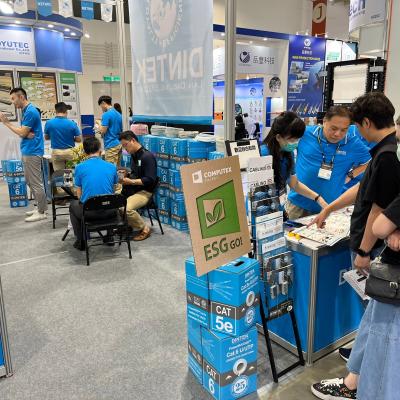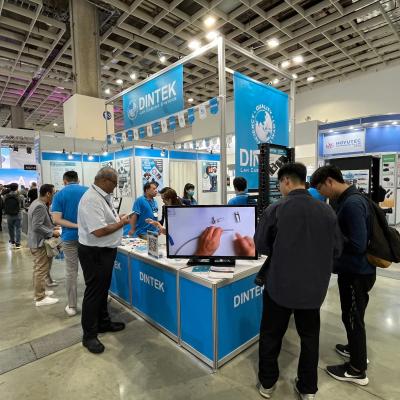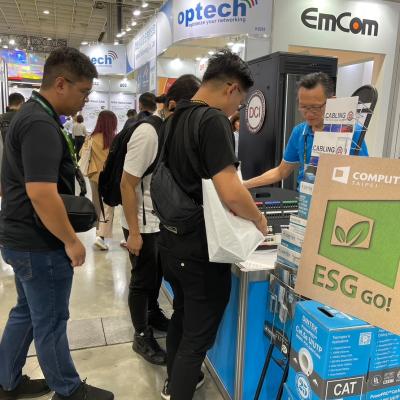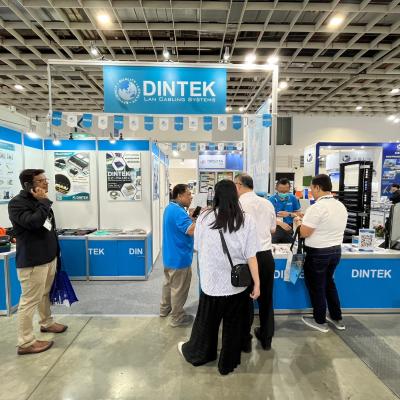Fiber Optic Types : Multimode and Singlemode
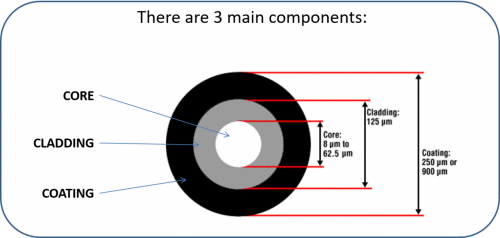
All fibers consist of three main components including:
- A core, which carries most of the light, surrounded by
- A cladding, which bends the light and confines it to the core, surrounded by
- A primary coating, which provides the first layer of mechanical protection, covered by a secondary buffer coating, which protects the relatively fragile primary coating and the underlying fiber.
But that's where the similarities end. Let's take a look at each individually:
Multimode Fiber
Multimode fiber has light travelling in the core in many rays (or modes), hence the name multimode. This means that light can propogate through the fiber in many different ray paths. It's core is five to six times larger in diameter than singlemode, which allows for more greater light-gathering capacity. Core diameters range from 50 micrometers (µm) to 1,000 µm and is typically used for communication over shorter distances, such as within a building or on a campus. Typical multimode links have data rates of 10 Mbit/s to 10 Gbit/s over link lengths of up to 600 meters - more than sufficient for the majority of premises applications.
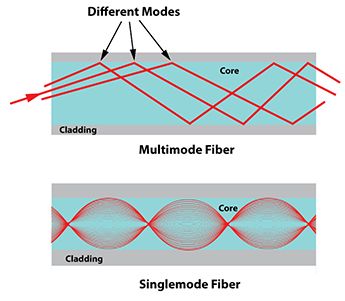
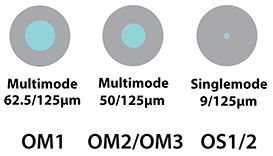
Multimode fibers are identified by the physical size of the core and the overall glass, often referred to as the cladding. The 62.5/125 multimode optical fiber is widely used in multimode cables. 62.5 µm refers to the outer diameter of the fiberglass core, while 125 µm is the outer diameter of the cladding. Another common graded index multimode fiber in use today is the 50/125 which is often referred to as "laser rated" fiber for it's higher bandwidth capacity. 50/125 comes in 2 types - OM2 and OM3 and now also OM4; whereas 62.5 micron is classified as OM1. 'OM' stands for 'Optical Mode'.
Singlemode Fiber
Singlemode fiber has a much smaller core, only about 9 microns, so that the light travels in only one ray. In single-mode fibers, all the multimode effects described above are eliminated; however, one pulse-spreading mechanism remains. Just as in the multimode fibers, different wavelengths of light travel at different speeds causing short pulses of light injected into the fiber to spread as they travel. This phenomenon is called "chromatic dispersion". The amount of pulse spreading depends on the spectral width or number of wavelengths or colors the light source produces. The lasers typically used as light sources for single-mode systems produce a relatively pure light output, with a narrow spectral width, reducing the chromatic dispersion effect in single-mode fibers. Nonetheless, the pulse broadening produced by chromatic dispersion ultimately limits the bandwidth of single-mode systems. Since fiber bandwidth determines the transmission distance capability of high-data-rate systems, several single-mode fiber designs have been developed to optimize this characteristic.
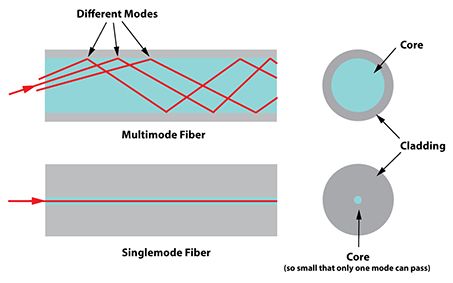
Breaking the differences down...
Cost
Construction
Application
Because multiple modes/light paths travel down a multimode fiber cable, it only offers high bandwidth over a short distance. When run over longer distances, modal dispersion (distortion) becomes an issue. This is typically expressed in a fiber's "effective modal bandwidth" characteristic, which is an inverse relation between fiber bandwidth and reach distance. As signaling bandwidth increases, the reach distance decreases – and vice versa – due to the modal dispersion effect.
email our sales team at :


